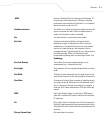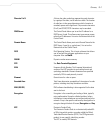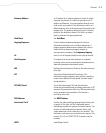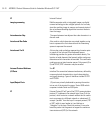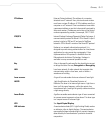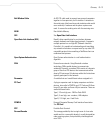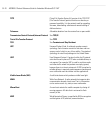
Glossary
GL-11
IP Address (Internet Protocol address) The address of a computer
attached to an IP network. Every client and server station
must have a unique IP address. A 32-bit address used by a
computer on a IP network. Client workstations have either
a permanent address or one that is dynamically assigned to
them each session. IP addresses are written as four sets of
numbers separated by periods; for example, 204.171.64.2.
IPX/SPX Internet Package Exchange/Sequential Packet Exchange. A
communications protocol for Novell. IPX is Novell’s Layer 3
protocol, similar to XNS and IP, and used in NetWare
networks. SPX is Novell's version of the Xerox SPP protocol.
Kerberos Kerberos is a network authentication protocol. It is
designed to provide strong authentication for client/server
applications by using secret-key cryptography. A free
implementation of this protocol is available from the
Massachusetts Institute of Technology. Kerberos is
available in many commercial products as well.
Key A key is the specific code used by the algorithm to encrypt
or decrypt the data. Also see, Encryption and Decrypting.
LAN Local area network. A radio network that supports data
communication within a local area, such as within a
warehouse of building.
laser scanner A type of bar code reader that uses a beam of laser light.
LASER Light Amplification by Stimulated Emission of
Radiation.The laser is an intense light source. Light from a
laser is all the same frequency, unlike the output of an
incandescent bulb. Laser light is typically coherent and has
a high energy density.
Laser Diode A gallium-arsenide semiconductor type of laser connected
to a power source to generate a laser beam. This laser type
is a compact source of coherent light.
LCD See Liquid Crystal Display.
LED Indicator A semiconductor diode (LED - Light Emitting Diode) used as
an indicator, often in digital displays. The semiconductor
uses applied voltage to produce light of a certain frequency
determined by the semiconductor's particular chemical
composition.



